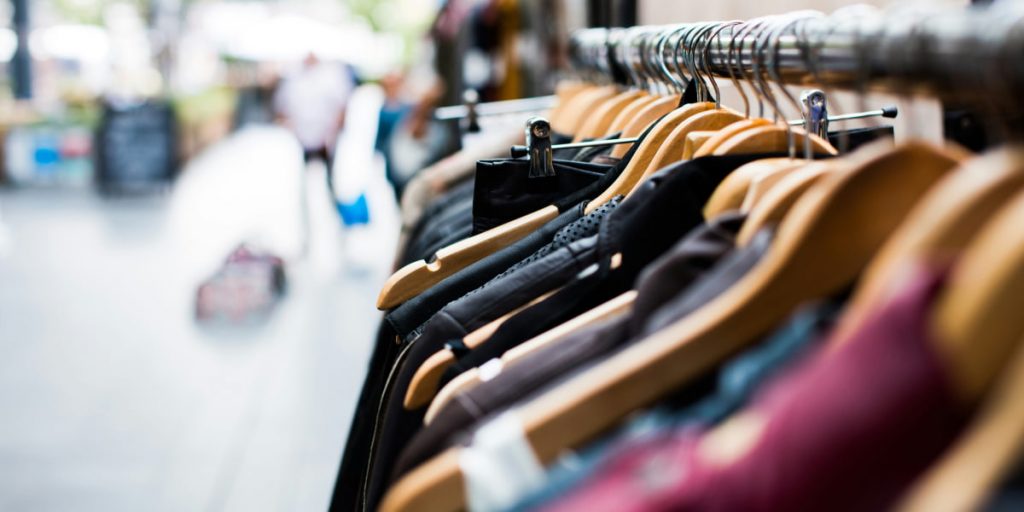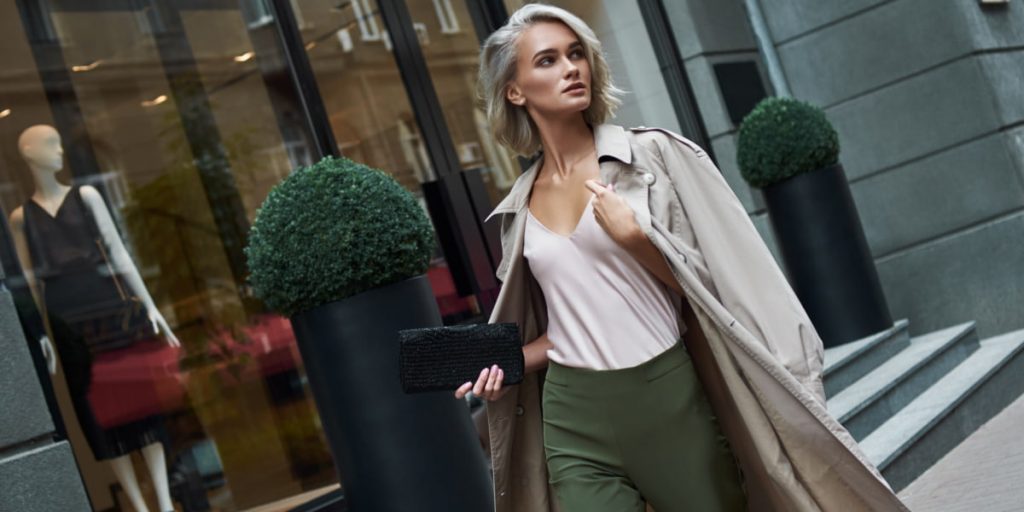Published on March 8th, 2024
Last updated on March 8th, 2024
How to Find Your Fashion Style

Discovering your unique fad is an empowering trip that goes beyond following trends. It’s about expressing your selfhood and confidence through garments. Striving to define your signature image involves a process of self-discovery and experimentation. Also, it includes discovering what truly resonates with you. How to find your style is a personal exploration that transcends mode norms and allows you to curate a wardrobe. It will reflect your personality.
Sometimes, it can be challenging to pinpoint precisely what resonates with your authentic self. Our guide aims to navigate the intricacies of personal fads. It offers insights and practical tips to help you define and refine your fashion identity. It doesn’t matter whether you’re drawn to classic elegance, bold statements, or a fusion of various styles. This journey is about embracing the art of self-expression through clothing. Let’s start the exciting path of discovering and cultivating a style. It speaks to the world and, more importantly, resonates with the essence of who you are.
How to Find Your Style
Discovering how to find your style is an exciting and personal trip. It allows you to express your individuality through clothing. Finding your fad is about adhering to trends. Also, it’s about understanding what resonates with your personality, preferences, and lifestyle. Here are some critical steps to help you go on self-discovery and curate a wardrobe that reflects your identity. Remember, finding your style is an ongoing process, and it’s perfectly fine to evolve. Enjoy the exploration, and embrace the uniqueness of your fads. Let your wardrobe become a canvas for self-expression.
Self-Reflection
The trip to discover your fashion identity begins with a crucial step: finding your clothing style. This involves deep self-reflection. It lets you understand your preferences, personality, and the image you want to project. Here’s a structured guide to help you navigate this introspective process:
- Understanding Personal Preferences: Take stock of your likes and dislikes. Consider the colors, patterns, and textures that resonate with you. Identify clothing items that make you feel confident and comfortable.
- Analyzing Lifestyle Needs: Assess your daily activities and routines. Your fad should align with your lifestyle. It must ensure your wardrobe is practical and versatile for various occasions.
- Expressing Individuality: Delve into aspects of your personality. They are what you want to highlight through your clothing. Whether you’re outgoing, creative, or minimalist, your style should reflect your individuality.
- Considering Body Shape: Recognize and appreciate your body shape. Understanding what silhouettes flatter your figure will guide you in selecting clothing. It enhances your natural features.
- Reflecting on Style Icons: Identify individuals or fashion styles that inspire you. This can be a starting point for creating a mood board or collecting ideas that resonate with your aesthetic preferences.
- Evaluating Comfort Zones: Reflect on whether you are open to stepping out of your comfort zone. Personal fad often evolves when you embrace new trends or experiment with different looks.
Remember, finding your clothing style is a personal and evolving process. Self-reflection lays the foundation for a wardrobe that authentically reflects who you are. It makes your fashion journey both introspective and exciting.
Inspiration Exploration
Exploration becomes a vital aspect of the process when finding your mode style. Finding inspiration allows you to discover and refine your unique fad preferences. Here’s a step-by-step guide to navigating this exciting phase:
- Diverse Sources: Cast a wide net when seeking inspiration. Explore fashion magazines, social media platforms, and style blogs. They’ll expose yourself to multiple styles.
- Observation Skills: Train your observation skills. They’ll help to identify patterns, colors, and styles that catch your eye. Take note of outfits that resonate with your aesthetic sense.
- Create a Mood Board: Curate a digital or physical mood board featuring images that inspire you. Include diverse elements like clothing fads, color palettes, and accessories.
- Style Icons: Identify style icons whose fashion choices align with your preferences. Analyze their looks to pinpoint elements that appeal to you.
- Runway Shows and Lookbooks: Explore fashion runway shows and designer lookbooks to witness a variety of styles. Pay attention to both mainstream and niche designers for a broader perspective.
- Cultural and Artistic Influences: Draw inspiration from cultural and artistic influences. Please look at how to incorporate elements of art, music, and different cultures into your fad.
- Document Your Preferences: Keep a journal or digital document. Write down specific elements that resonate with you there. This helps in crystallizing your evolving fashion preferences.
By actively engaging in inspiration exploration, you open yourself to a world of possibilities. Also, you ultimately hone in on the elements that define how to find your fashion style. This trip is about discovering what speaks to you and develops your unique fashion personality.
Finding Your Clothing Style

Discovering your garment style is a journey of self-expression and authenticity. This process involves exploring different elements to curate a wardrobe. That will resonate with your personality and preferences. Here are practical steps to guide you in finding your clothing style. Remember, it is a personal and ongoing exploration. Be curious about this process and enjoy the freedom to express your true personality through your wardrobe choices.
Closet Assessment
Begin the trip with a comprehensive closet assessment. This step is crucial for understanding your current preferences. It lays the foundation for a wardrobe that truly reflects your unique identity. Follow these steps in the closet assessment process:
- Identify Favorites: Pinpoint items you love and feel confident wearing. These pieces often hold clues to your style.
- Discard Unworn Items: Clear out items you haven’t worn. This helps declutter and create space for pieces that align with your evolving taste.
- Note Patterns: Observe recurring patterns, colors, and styles among your favorite pieces. This highlights elements that resonate with you.
- Evaluate Fit: Assess how healthy items fit your body. Understanding your preferred silhouettes contributes to defining your fashion style.
- Recognize Outdated Pieces: Identify items that no longer fit your current style aspirations. This creates room for new, more fitting additions.
- Assess Versatility: Consider how versatile your wardrobe is. Look for items you can mix and match to create a variety of outfits.
Conducting a thorough closet assessment serves as a crucial foundation. It’ll help you to know how to find your fashion style. It allows you to build a wardrobe that authentically represents your evolving fad.
Color Palette
Choosing a color palette is a pivotal aspect of defining your style. The hues you gravitate towards can impact your wardrobe’s cohesiveness. Also, it may reflect your individual preferences. Consider the following steps in crafting a color palette that aligns with how to find your fashion style:
- Reflect on Preferences: Identify colors you naturally enjoy wearing and feel confident in. Reflecting on your favorite shades provides a starting point.
- Consider Skin Tone: Consider your skin tone. It determines which colors complement and enhance your complexion. Understanding this can elevate your overall look.
- Embrace Versatility: Select a base of neutral tones (black, white, beige, or grey) to form a versatile foundation for your wardrobe. Neutrals pair well with a variety of colors.
- Accent Colors: Choose a few accent colors to inject personality into your palette. Depending on your style preferences, these can be bold, vibrant, or subtle pastels.
- Seasonal Adaptation: Consider adapting your color palette seasonally. For example, warmer autumn tones and cool spring shades add variety while maintaining a cohesive aesthetic.
- Experiment with Patterns: Explore patterns that incorporate your chosen colors. Patterns can add depth and interest to your outfits, showcasing your unique style.
- Balance and Harmony: Strive for balance and harmony in your color choices. A well-balanced palette ensures that your wardrobe pieces complement each other seamlessly.
Crafting a curated color palette is an essential step in expressing your fad. It allows you to make intentional choices in building a cohesive and harmonious wardrobe.
What is My Style of Clothing?

It’s a question many individuals ask themselves as they navigate the vast fashion world. Your style of garment is a unique expression of your personality and preferences. To uncover and define your style, consider the following steps:
- Self-Reflection: Take a moment to reflect on your personality, lifestyle, and desired image. It’ll help you to project through your clothing.
- Closet Analysis: Evaluate your current wardrobe. Identify the pieces you love and feel confident in, noting color, style, and fit patterns.
- Inspiration Seeking: Explore fashion magazines, social media, and style blogs for inspiration. Pinpoint looks that resonate with you and incorporate those elements into your style.
- Experimentation: Be open to trying different styles and silhouettes. Experimentation is crucial in discovering what makes you feel comfortable and authentic.
- Feedback: Seek feedback from friends or fashion-savvy individuals. External perspectives can provide valuable insights as you explore and refine your clothing fad.
So, what is my style of clothing? It is a dynamic and evolving question. Embrace the trip of self-discovery, and enjoy the process of experimentation. Let your clothing be a canvas for expressing your authentic self.
Personal Style Examples

Unlocking your unique fashion journey begins with exploring diverse personal fad variants. Your clothing choices are a canvas for expressing individuality. Understanding different styles can inspire your fashion evolution. From classic elegance to eclectic bohemian, each style reflects a distinct personality. In this guide of personal style examples, discover the diversity of mode expressions and find inspiration to craft a wardrobe. It will authentically resonate with who you are. Let’s delve into a world where clothing becomes a powerful tool for self-expression and creativity.
Classic Elegance
This is a timeless and refined unique style example that exudes sophistication. This fad archetype embraces enduring pieces and a restrained color palette. It creates an effortlessly polished look. Key elements include:
- Timeless Pieces: The foundation is a well-tailored jacket, crisp white shirts, and tailored trousers.
- Neutral Colors: Emphasis on neutral colors like black, white, navy, and beige creates a cohesive and elegant aesthetic.
- Tailored Silhouettes: Fitted and well-structured silhouettes enhance the polished appearance. They emphasize clean lines and attention to detail.
- Quality Fabrics: The choice of high-quality fabrics. Wool, silk, and cotton are among them, adding to the ensemble’s overall sophistication.
- Minimal Accessories: An emphasis on minimalist accessories with a preference for timeless details. Among them are such as pearls or classic watches.
Classic elegance is a great personal style example that stands the test of time. It allows individuals to embody a poised and refined presence in any setting.
Preppy Classic
This is a timeless and polished archetype. Preppy classic exudes sophistication and a refined aesthetic. Characterized by clean lines, well-coordinated outfits, and a nod to traditional college wear. This fad offers a versatile and elegant approach to fashion. Key elements of the preppy classic style include:
- Crisp Basics: Invest in well-tailored, crisp basics such as button-down shirts, polo shirts, and khaki trousers.
- Pops of Color: Incorporate pops of color, often in the form of vibrant sweaters, blazers, or accessories, to add a touch of playfulness.
- Classic Patterns: Embrace timeless patterns. Among them are stripes, plaids, and checks, commonly found on shirts, skirts, and dresses.
- Tailored Silhouettes: Opt for tailored silhouettes that flatter the body. They include A-line skirts, well-fitted blazers, and structured dresses.
This personal style example is perfect for those who appreciate a put-together appearance. It draws inspiration from traditional fashion elements with a modern twist.
Sporty Athleisure
The sporty athleisure style seamlessly blends comfort and fashion. It embodies a casual yet trendy aesthetic. This example of individual style is generally characterized by sportswear. You can wear it outside the gym, demonstrating a dynamic and active lifestyle. Key elements of this personal style example style include:
- Comfortable Activewear: Incorporate comfortable activewear pieces. Among them are leggings, joggers, and sports bras in everyday outfits.
- Sneakers as Staples: Make sneakers a focal point, pairing them with casual and dressier ensembles to add a sporty edge.
- Logo Statements: Embrace clothing items with sporty logos. It represents athletic brands or casual streetwear labels.
- Layering with Hoodies and Jackets: Layer hoodies or stylish jackets over activewear to create a sporty yet chic look.
This style allows individuals to transition from the gym to everyday activities seamlessly. It is while maintaining a fashionable edge. Comfort meets trendiness, making it a go-to choice for those who appreciate an active and dynamic lifestyle.
Conclusion
How to find your style is a unique trip of self-discovery and expression. Embrace the uniqueness of your preferences, and experiment with various looks. Trust your instincts. Fashion is a dynamic canvas for individuality. As you refine your wardrobe, remember that personal fad is a developing reflection of your authentic self. Enjoy the process of discovering and celebrating your distinctive mode sense.
FAQ
Does my body shape influence my style?
Yes, your body shape can significantly influence your style. Certain silhouettes and clothing cuts may enhance your features and complement your proportions.
How important are colors in defining my style?
Colors play a crucial role in defining your style. They influence the aesthetic and mood of your outfits. Also, colors express your personality and preferences.
Can my personal style change over time?
Personal style is dynamic and can change over time. This happens as your tastes evolve, experiences influence you, and new fashion inspirations emerge.
How can I incorporate trends into my style?
You can incorporate trends into your style by selectively adopting elements. They resonate with your aesthetic, allowing you to stay current while maintaining authenticity.

